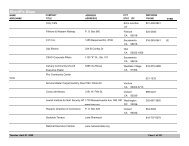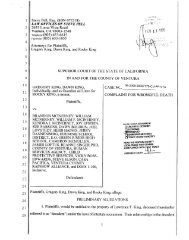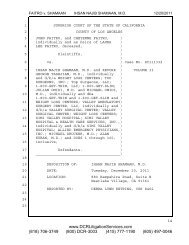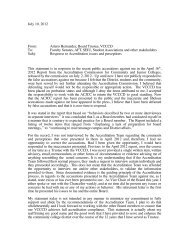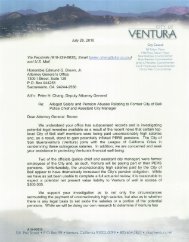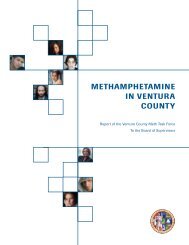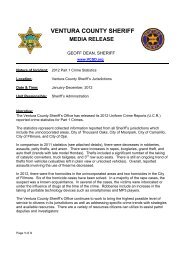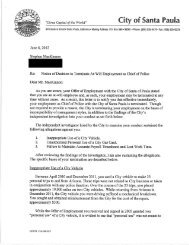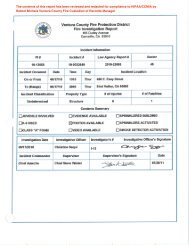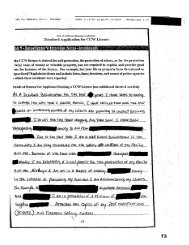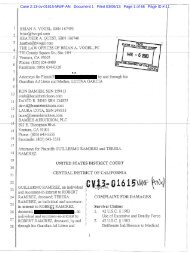Metrolink peer review report - Ventura County Star
Metrolink peer review report - Ventura County Star
Metrolink peer review report - Ventura County Star
You also want an ePaper? Increase the reach of your titles
YUMPU automatically turns print PDFs into web optimized ePapers that Google loves.
METROLINK COMMUTER RAIL SAFETY PEER REVIEW PANEL<br />
Final Report – January 5, 2009<br />
c. Second Set of Eyes<br />
Issue Papers<br />
The SCRRA Board has passed a motion to mandate that each <strong>Metrolink</strong> train have a second set of eyes within the<br />
cab.<br />
Observations<br />
The <strong>Metrolink</strong> system of observation and verification of signals on the system utilizes the engineer and the<br />
conductor working together. In this case, one crew member calls the signal while the other verifies the status of<br />
the signal. In this operation, the second set of eyes is the conductor who is stationed at any point within the train.<br />
Recommendation<br />
a. The Panel does not believe that the implementation of the Second Set of Eyes program would result in<br />
improved safety of train operations. There is concern that a second person in the cab of the locomotive or<br />
cab car could become a distraction to the engineer.<br />
b. The Panel understands that the Second Set of Eyes program was initiated to instill public confidence in<br />
<strong>Metrolink</strong>’s service and believes that when the recommendations outlined below, which are included in the<br />
Panel’s recommended Enhanced Safety Action Plan, are implemented they can replace the Second Set of<br />
Eyes program:<br />
i. Strategic Safety Leadership Team;<br />
ii. Organizational re-structuring;<br />
iii. Enhanced Operations Testing Plan;<br />
iv. Increased observations of safety critical employees (Efficiency Testing); and<br />
v. Installation of in-cab video technology.<br />
c. Recommend that SCRRA perform a Hazard Analysis under its SSPP including research and analysis of<br />
accident data where there has been a second set of eyes to better inform its decision on this issue.<br />
Background<br />
There is a perception that a second set of eyes may prevent incidents where signals or other system control devices<br />
are inadvertently missed or not seen. The idea is that one person is in the cab calling signals and the second<br />
person visually and orally verifies the signal. The observation/verification process is currently performed by<br />
<strong>Metrolink</strong> engineers and conductors within the train, not necessarily with both members of the crew in the cab.<br />
The freight railroads utilize a second crewmember in the cab for signal verification. This has had mixed results in<br />
preventing incidents related to missed signals passed at danger (SPAD).<br />
Some <strong>Metrolink</strong> observers are speculating that human errors can be reduced by assigning two employees rather<br />
than a single engineer to the front of each train. However, transportation officials, in various modes of<br />
transportation have felt that a second crew member in the cab can be a distraction. This distraction is normally<br />
due to conversation occurring in the cab between crew members. The Federal Aviation Administration, realizing<br />
the distraction, requires mandatory silence during critical flight phases. In addition, transit agencies operating<br />
light rail and subway systems have created rules that mandate silence within the driver operating environment.<br />
The case for “a second set of eyes” assumes that if the lead engineer misses a signal, the second employee is likely<br />
to point out the error and avert an incident. Many accidents have occurred however, where two sets of eyes have<br />
55



